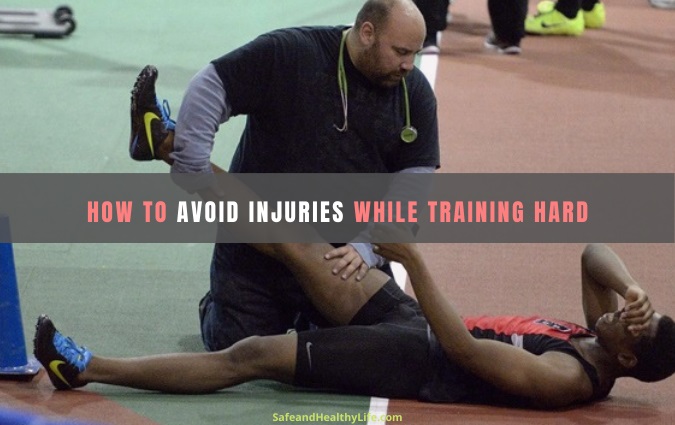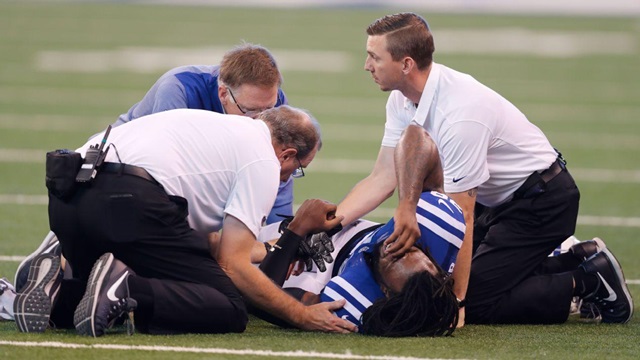
You can’t completely avoid injuries while training.
At least not when you are training at the level required of elite athletes. In fact, because we are exposed to much more time training than the actual competition, athletes experience just as many injuries during training and practice as they do in actual competition.
So, how do reduce the risk of injury while training?
Injury Prevention Training & Protocols
According to the University of Rochester Medical Center, simple things like not wearing the right gear (mal-fitting), not properly stretching before exercising, and incorrect training practices [technique] are leading causes of sports injury.
Sprains and strains are the most common injuries with joint injuries leading the way, especially knees, shoulders, and ankles. The first thing sports medicine specialist will tell you is to work on flexibility and muscle strength, especially regarding joint-stabilizing muscles.
But no matter how strong or flexible you are, the speed of play with pretty much any professional sport puts you at high risk. For example, let’s look at Malik Hooker, a safety for the Indianapolis Colts who are second at Bookmaker to win the AFC South.
Malik Hooker is a top-level safety and has had 7 notable injuries since 2017. He underwent a double sports hernia surgery immediately following the conclusion of his final season of College Football at Ohio State.
A couple of weeks later he had torn labrum surgically repaired. Later year, while playing professionally, he suffered a Grade 3 ACL tear. Both the ACL and MCL were severely damaged and he missed more than half the season undergoing surgery in November of 2017.

On October 21 of 2018, he strained his hip (inguinal) and missed a game. Almost a month later, he had another inguinal hip strain and missed another game. A couple of months later he injured his foot and missed a playoff game.
And at the beginning of the next season, September 22nd, 2019 he tore his meniscus and underwent knee surgery, missing three games (three to 4 weeks).
In a game like football, torn ACLs, MCLs, and meniscus are something that can happen at any moment, a teammate or opponent can fall on your leg and simply bend your joint beyond its capability to articulate.
However, what we can learn from Malik is not to play through pain. He was playing with a torn labrum and hernias during the college football playoffs. And obviously, he strained his hip and then played through the pain, came back too early, and strained it again.
A few things that people don’t think about to avoid injuries is to stay well-hydrated. As we train, our body temperature rises, so we sweat to keep our core temperature cool.
If we are not adequately hydrated, our muscles don’t have enough water which exacerbates muscle fatigue and puts us at greater risk for injuries. Water also helps your blood transport oxygen and essential nutrients to all the cells around your body, making hydration a critical part of recovery.
Another way to reduce the risk of injuries is to turn the auto-pilot off. What I mean by that is once we have the basic mechanics of a movement down, we kind of go on auto-pilot and stop focusing on the fundamentals of the motion.
This is why people throw their backs out lifting weights, etc. So, it’s a good idea to slow down occasionally and focus on the mechanics of your movements to reinforce your muscle memory with the proper fundamentals.
Steps for Injury Prevention Per URMC:[1]
- Develop a fitness plan that includes cardiovascular exercise, strength training, and flexibility.
- Alternate exercising different muscle groups and exercise every other day.
- Cool down properly after exercise or sports. It should take 2 times as long as your warm-ups.
- Stay hydrated. Drink water to prevent dehydration, heat exhaustion, and heatstroke.
- Stretching exercises can improve the ability of muscles to contract and perform, reducing the risk of injury. Each stretch should start slowly until you reach a point of muscle tension. Stretching should not be painful. Aim to hold each stretch for up to 20 seconds.
- Use the right equipment or gear and wear shoes that provide support and that may correct certain foot problems that can lead to injury.
- Learn the right techniques to play your sport.
- Rest when tired. Avoid exercise when you are tired or in pain.
- Always take your time during strength training and go through the full range of motion with each repetition.
- If you do sustain a sports injury, make sure you participate in adequate rehabilitation before resuming strenuous activity.
About The Author:
Justin Hilbert is a Florida writer with 20 years of experience in the sports and health niche. He has had the opportunity to work as Editor in Chief. His skills include communication and social media marketing. Justin has a technical degree in web development.
Ref:
[1] “Preventing Sports Injuries – Health Encyclopedia – University ….” https://www.urmc.rochester.edu/encyclopedia/content.aspx?contenttypeid=85&contentid=P00935. Accessed 11 Nov. 2020.




